 W
WAndrea Argoli (1570–1657), born in Tagliacozzo, was a versatile Italian scholar. He was a jurist, mathematician, astronomer and astrologer, and medical writer. His father was Ottavio and his son, Giovanni.
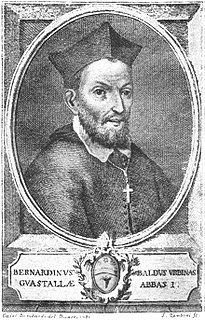 W
WBernardino Baldi was an Italian mathematician and writer.
 W
WGiovanni Battista Baliani was an Italian mathematician, physicist and astronomer.
 W
WFrancesco Barozzi was an Italian mathematician, astronomer and humanist.
 W
WGasparo Berti was an Italian mathematician, astronomer and physicist. He was probably born in Mantua and spent most of his life in Rome. He is most famous today for his experiment in which he unknowingly created the first working barometer. Though he was best known for his work in mathematics and physics, little of his work in either survives.
 W
WMario Bettinus was an Italian Jesuit philosopher, mathematician and astronomer. The lunar crater Bettinus was named after him by Giovanni Riccioli in 1651. His Apiaria Universae Philosophiae Mathematicae is an encyclopedic collection of mathematical curiosities. This work had been reviewed by Christoph Grienberger. Bettini was one of the fiercest Jesuit critics of Cavalieri's method of Indivisibles.
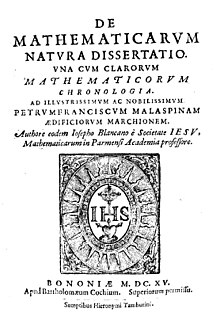 W
WGiuseppe Biancani (1566–1624) was an Italian Jesuit astronomer, mathematician, and selenographer, after whom the crater Blancanus on the Moon is named. He was a native of Bologna.
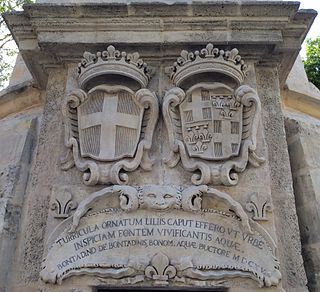 W
WVittorio Bontadini, better known as Bontadino de Bontadini, was a Bolognese hydraulic engineer, architect, mathematician and wood carver. He is mostly known for designing the Wignacourt Aqueduct in Malta.
 W
WGiovanni Alfonso Borelli was a Renaissance Italian physiologist, physicist, and mathematician. He contributed to the modern principle of scientific investigation by continuing Galileo's practice of testing hypotheses against observation. Trained in mathematics, Borelli also made extensive studies of Jupiter's moons, the mechanics of animal locomotion and, in microscopy, of the constituents of blood. He also used microscopy to investigate the stomatal movement of plants, and undertook studies in medicine and geology. During his career, he enjoyed the patronage of Queen Christina of Sweden.
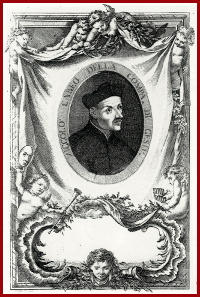 W
WNiccolò Cabeo, also known as Nicolaus Cabeus, was an Italian Jesuit philosopher, theologian, engineer and mathematician.
 W
WPaolo Casati was an Italian Jesuit mathematician. Born in Piacenza to a Milanese family, he joined the Jesuits in 1634. After completing his mathematical and theological studies, he moved to Rome, where he assumed the position of professor at the Collegio Romano. He was given the chair in mathematics after teaching philosophy and theology.
 W
WGiovanni Domenico Cassini, also known as Jean-Dominique Cassini was an Italian mathematician, astronomer and engineer. Cassini was born in Perinaldo, near Imperia, at that time in the County of Nice, part of the Savoyard state. Cassini is known for his work in the fields of astronomy and engineering. Cassini discovered four satellites of the planet Saturn and noted the division of the rings of Saturn; the Cassini Division was named after him. Giovanni Domenico Cassini was also the first of his family to begin work on the project of creating a topographic map of France.
 W
WBenedetto Castelli, born Antonio Castelli, was an Italian mathematician. Benedetto was his name in religion on entering the Benedictine Order in 1595.
 W
WPietro Antonio Cataldi was an Italian mathematician. A citizen of Bologna, he taught mathematics and astronomy and also worked on military problems. His work included the development of continued fractions and a method for their representation. He was one of many mathematicians who attempted to prove Euclid's fifth postulate.
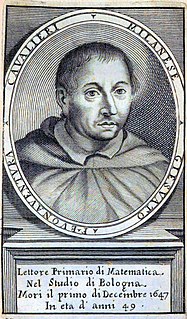 W
WBonaventura Francesco Cavalieri was an Italian mathematician and a Jesuate. He is known for his work on the problems of optics and motion, work on indivisibles, the precursors of infinitesimal calculus, and the introduction of logarithms to Italy. Cavalieri's principle in geometry partially anticipated integral calculus.
 W
WTommaso Ceva was an Italian Jesuit mathematician from Milan. He was the brother of Giovanni Ceva.
 W
WPietro De Martino or Di Martino was an Italian mathematician and astronomer.
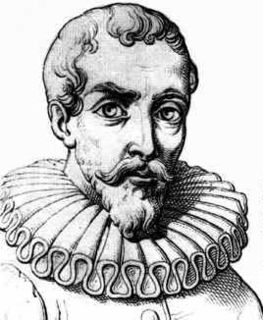 W
WGuidobaldo del Monte, Marquis del Monte, was an Italian mathematician, philosopher and astronomer of the 16th century.
 W
WFerdinando di Diano da Diano, also known as Donatus Polienus, was an Italian mathematician, abbot, philosopher, and theologist.
 W
WGregorio Fontana, born Giovanni Battista Lorenzo Fontana was an Italian mathematician and a religious of the Piarist order. He was chair of mathematics at the university of Pavia succeeding Roger Joseph Boscovich. He has been credited with the introduction of polar coordinates.
 W
WGalileo di Vincenzo Bonaiuti de' Galilei was an Italian astronomer, physicist and engineer, sometimes described as a polymath, from Pisa. Galileo has been called the "father of observational astronomy", the "father of modern physics", the "father of the scientific method", and the "father of modern science".
 W
WDom Guido Grandi, O.S.B. Cam. was an Italian monk, priest, philosopher, theologian, mathematician, and engineer.
 W
WOrazio Grassi, S.J., was an Italian Jesuit priest, who is best noted as a mathematician, astronomer and architect. He was one of the authors in controversy with Galileo Galilei on the nature of comets. His writings against Galileo were published under the pseudonym Sarsi.
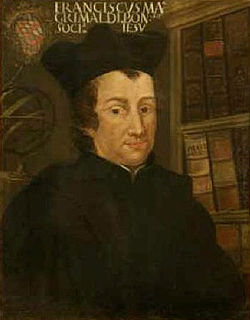 W
WFrancesco Maria Grimaldi was an Italian Jesuit priest, mathematician and physicist who taught at the Jesuit college in Bologna. He was born in Bologna to Paride Grimaldi and Anna Cattani.
 W
WCamillo Guarino Guarini was an Italian architect of the Piedmontese Baroque, active in Turin as well as Sicily, France, and Portugal. He was a Theatine priest, mathematician, and writer.
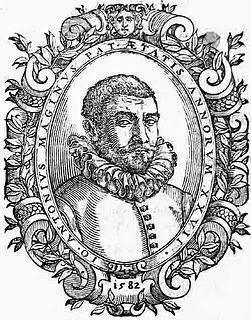 W
WGiovanni Antonio Magini was an Italian astronomer, astrologer, cartographer, and mathematician.
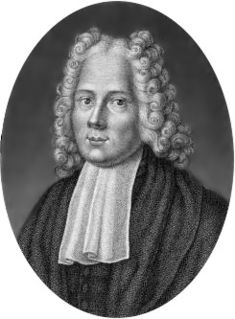 W
WAlessandro Marchetti was an Italian mathematician, noted for criticizing some conclusions of Guido Grandi, a student of Giovanni Alfonso Borelli who was influenced by Galileo and Aristotle.
 W
WLanfranco Mignoti was an Italian mathematician.
 W
WOvidio Montalbani was an Italian mathematician.
 W
WElena Lucrezia Cornaro Piscopia or Elena Lucrezia Corner, also known in English as Helen Cornaro, was a Venetian philosopher of noble descent who in 1678 became one of the first women to receive an academic degree from a university, and the first to receive a Doctor of Philosophy degree.
 W
WJacopo Francesco Riccati was a Venetian mathematician and jurist from Venice. He is best known for having studied the equation which bears his name.
 W
WFrancesco Ricci was an Italian economist and mathematician.
 W
WMatteo Ricci, was an Italian Jesuit priest and one of the founding figures of the Jesuit China missions. He created the Kunyu Wanguo Quantu, a 1602 map of the world written in Chinese characters. He is considered a Servant of God by the Catholic Church.
 W
WGiovanni Girolamo Saccheri was an Italian Jesuit priest, scholastic philosopher, and mathematician.
 W
WOttavio Scarlattini was an Italian mathematician and writer.
 W
WVittorio Siri or Francesco Siri (1608–1685) was an Italian mathematician and a monk.
 W
WStefano degli Angeli was an Italian mathematician, philosopher, and Jesuat.
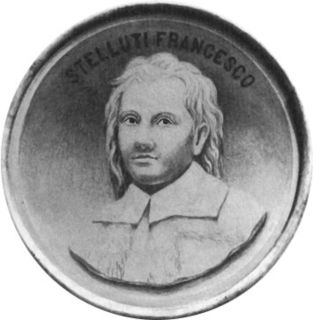 W
WFrancesco Stelluti was an Italian polymath who worked in the fields of mathematics, microscopy, literature, and astronomy. Along with Federico Cesi, Anastasio de Filiis and Johannes van Heeck, he founded the Accademia dei Lincei in August 1603.
 W
WEvangelista Torricelli was an Italian physicist and mathematician, and a student of Galileo. He is best known for his invention of the barometer, but is also known for his advances in optics and work on the method of indivisibles.
 W
WLuca Valerio (1553–1618) was an Italian mathematician. He developed ways to find volumes and centers of gravity of solid bodies using the methods of Archimedes. He corresponded with Galileo Galilei and was a member of the Accademia dei Lincei.
 W
WGiordano Vitale or Vitale Giordano was an Italian mathematician. He is best known for his theorem on Saccheri quadrilaterals. He may also be referred to as Vitale Giordani, Vitale Giordano da Bitonto, and simply Giordano.
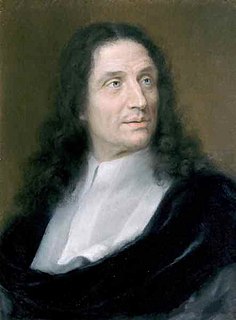 W
WVincenzo Viviani was an Italian mathematician and scientist. He was a pupil of Torricelli and a disciple of Galileo.
 W
WNiccolò Zucchi was an Italian Jesuit, astronomer, and physicist.
 W
WGiovanni Battista Zupi or Zupus was an Italian astronomer, mathematician, and Jesuit priest.